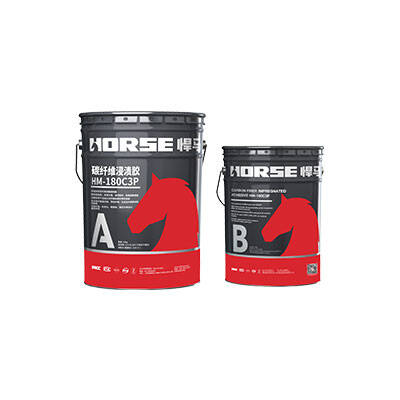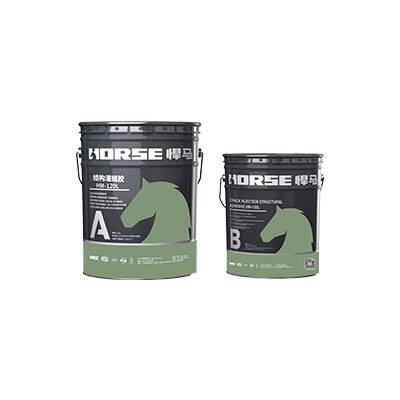Technologie de renforcement pour les défauts de qualité des pote
Outre les raisons de la mauvaise qualité des poteaux causées par les constructions susmentionnées, en pratique, la capacité de charge des poteaux en béton armé est souvent insuffisante en raison d'une mauvaise conception et de catastrophes (séisme, incendie, inondation), ou d'une augmentation de la charge sur le poteau due à une modification de la fonction de la structure. Dans ces conditions, il est nécessaire de renforcer les poteaux en béton armé.
1. Nid d'abeille et trou
1.1 Causes
Un mauvais dosage du béton, des pierres et du ciment entraîne une quantité insuffisante de mortier et une quantité excessive de pierres.
Le béton potassique a un temps de mélange court et une faible compatibilité.
Lors du coulage du béton, le coulage est irrégulier et le béton est mal nivelé, ce qui entraîne une ségrégation du béton.
Les interstices du coffrage de collage sont dégagés et l'eau et la boue s'écoulent.
1.2 mesures de prévention et de contrôle
La proportion des matériaux doit être strictement contrôlée et vérifiée régulièrement afin de garantir la précision des mesures.
Le temps de malaxage doit être adapté et le rapport de mélange doit être rigoureusement respecté.
Si la hauteur de béton est trop importante, des mesures appropriées doivent être prises pour évacuer le matériau.
Afin d'éviter les fuites de coulis, du ruban adhésif double face est utilisé pour sceller les fissures au fond du moule de la colonne.
Lors du coulage, le fond de la colonne doit être rempli de mortier de ciment de la même nuance que le béton de la colonne, sur une épaisseur d'environ 50 à 100 mm.
Veiller à ce qu'aucune ségrégation ne se produise pendant le coulage du béton et que la hauteur de chute libre du béton ne dépasse pas 2 m.
Utiliser un coulis de ciment à 1:2 ou 1:2,5 pour lisser et raffermir après le nettoyage de l'outil. Pour les nids d'abeilles ou les trous plus grands, les granulats des parties fragiles et lâches du nid d'abeilles doivent être concassés. Après le lavage et le brossage, le béton de pierre fine d'une qualité supérieure à l'original doit être utilisé pour le coulage et le compactage, et l'entretien doit être renforcé.
2. Gluten
2.1 Cause
Lors du coulage du béton, la couche de protection en acier est décalée, insuffisante ou présente des fuites, ce qui expose la barre d'acier au gabarit.
Un mélange de béton inadapté peut entraîner une rupture, en raison d'un manque de coulis ou de coulis dans le coffrage.
Les éléments de structure sont de petite section, trop denses en barres d'acier et coincés dans celles-ci, ce qui empêche le mortier de ciment de se remplir de barres d'acier, ce qui expose les armatures.
La couche de protection en béton est trop fine ou la vibration du béton n'est pas solide ; le vibrateur adhère à la barre d'acier ou la piétine, ce qui entraîne le déplacement de la barre d'acier et expose les armatures.
Si la clé à moule en bois n'est pas arrosée et humidifiée, l'absorption d'eau, le collage ou le démoulage seront prématurés.
2.2 mesures de prévention et de contrôle
Lors du coulage du béton, il convient de vérifier et d'ajuster l'épaisseur des armatures et de la couche de protection.
Si l'acier est dense, il est conseillé d'utiliser des pierres de diamètre approprié pour garantir la précision et la flexibilité du mélange.
Les vibrations du béton doivent éviter de heurter les barres d'acier, de les piétiner et de les redresser, par exemple en les pliant.
Le coffrage doit être parfaitement humide et bien obstruer l'espace.
Une fois la surface nettoyée et décapée, du mortier de ciment 1:2 ou 1:2,5 est appliqué sur la surface et la zone exposée est nivelée. L'armature exposée est profonde, et le béton faible et les particules saillantes sont ciselés pour être lavés et compactés avec du béton de pierre fine plus épais que le béton d'origine.
3. Piqûres et angle manquant
3.1 Cause
Le gabarit n'a pas été peint ou a été peint avec un isolant irrégulier.
Le coffrage en bois n'est pas complètement arrosé ou suffisamment mouillé, le béton n'a pas bien durci après le coulage, ce qui entraîne une déshydratation, une faible résistance ou un gonflement du gabarit dû à l'eau, ce qui fissure l'angle de bord, et l'angle est collant au démontage du moule.
Le béton n'a pas été vibré.
Lorsque le moule est cassé, les bords et les coins sont heurtés par des objets lourds ou des forces externes, ou la protection est insuffisante. Les bords et les coins sont arrachés.
3.2 mesures de prévention et de contrôle
Le gabarit doit être brossé avec un agent isolant et suffisamment humidifié avant le coulage du béton.
Lors de la démolition du gabarit de colonne, le béton doit être suffisamment résistant ; lors du retrait du coffrage, il convient de protéger les bords et les angles et d'éviter toute force excessive.
Le béton doit être stratifié et vibré uniformément conformément aux règles de l'art afin d'éviter les fuites.
Après humidification, le béton peut être lissé avec du mortier de ciment ou du mortier de ciment avec un rapport de mélange brut après arrosage. Les angles manquants peuvent être éliminés par des particules libres. Après humidification complète, la perte d'aspect est corrigée avec du mortier de ciment 1:2 ou 1:2,5.
4. Faible résistance et mauvaise homogénéité
4.1 Cause
Modification à volonté des proportions du mélange de béton, rapport eau/ciment élevé et affaissement important.
Agitation insuffisante ;
Vibration inégale ;
Élimination prématurée des moisissures, entretien insuffisant, déshydratation précoce et surface meuble.
4.2 mesures de prévention et de contrôle
Afin de garantir la qualité des matières premières pour le béton, les matériaux entrants doivent être inspectés et vérifiés conformément aux normes de qualité, et le réexamen des échantillons doit être effectué conformément à la réglementation.
Contrôler strictement le rapport de mélange du béton, garantir la précision des mesures, déterminer le rapport de conformité en salle d'essai, ajuster le rapport de mélange de construction et contrôler correctement la quantité d'eau ajoutée et d'adjuvants.
Le béton doit être mélangé uniformément et uniformément. Son affaissement peut être inférieur à celui du béton pour poutres et panneaux. Un réducteur d'eau doit être ajouté pour améliorer sa maniabilité et réduire sa consommation d'eau.
La vibration doit être uniforme et dense, et les poteaux de petite section et de hauteur élevée doivent être percés d'ouvertures sur le côté de la matrice et coulés par sections.
En cas de faible résistance du béton, la résistance réelle du béton structurel peut être mesurée par des méthodes incassables (telles que la méthode du retour élastique et la méthode par ultrasons). Si la résistance du béton ne peut pas être respectée, le schéma de traitement peut être étudié en fonction du degré de sécurité de la résistance et de la structure réelles, et les mesures de renforcement ou de renforcement correspondantes sont prises.
5. Au sommet de la colonne, il y a plus de mortier et moins de pierres, et la surface est meuble et fissurée.
5.1 Cause
La principale raison est que le rapport eau/ciment du béton est élevé, que l'affaissement est important, que la vitesse de coulage et de compactage est trop rapide et que l'eau n'est pas éliminée par stratification. Lorsque la couche supérieure n'est pas retirée, l'eau est versée et coulée deux fois.
5.2 Mesures de prévention et de contrôle
Contrôler strictement la proportion de béton, en veillant à ce que le rapport eau/ciment et l'affaissement ne soient pas trop élevés afin de réduire le phénomène de ressuage.
L'ajout d'un réducteur d'eau permet de réduire la consommation d'eau, d'améliorer considérablement la résistance initiale et finale du béton, d'améliorer sa durabilité, de réduire le retrait et d'augmenter sa maniabilité.
Organiser correctement les colonnes de béton et ralentir la vitesse de coulage. Lors du coulage du béton jusqu'au sommet de la colonne, l'eau et la surface du béton doivent être éliminées deux fois.
Pour le coulage de grandes colonnes, il est conseillé de les couler par sections et de les découper en couches, en particulier pour le béton commercial.
Si la pierre au sommet de la colonne est fine et que la surface est meuble, le béton et les particules de granulats restantes peuvent être ciselés, puis l'eau est lavée et imbibée d'eau, puis le béton est réparé avec du béton de pierre fine, plus haut que le repère d'origine et soigneusement entretenu.
Outre les raisons de la mauvaise qualité des poteaux causées par les constructions susmentionnées, en pratique, la capacité de charge des poteaux en béton armé est souvent insuffisante en raison d'une mauvaise conception, de catastrophes (séismes, incendies, inondations) ou d'une augmentation de la charge due à une modification de la fonction de la structure. Dans ces conditions, le renforcement des poteaux en béton armé est nécessaire.
Il existe de nombreuses méthodes pour renforcer les poteaux en béton armé (BA), notamment le renforcement de la section et des poteaux BA ; le renforcement par quatre ou deux barres d'acier dans le poteau en béton ; le renforcement par fibres de carbone pour la réparation de la structure en béton par composite polymère renforcé de fibres (PRF) ; l'utilisation de plaques d'acier collées structurellement. La méthode de renforcement par collage est la fixation d'armatures en acier collées à la surface du bâtiment ; la méthode de renforcement par entretoises précontraintes pour renforcer le poteau en béton avec des entretoises externes en acier précontraint ; la méthode de renforcement local, en cas d'incendie ou d'erreurs de construction, et la méthode de renforcement combiné, combinée à la méthode précédente, sont également utilisées.

































